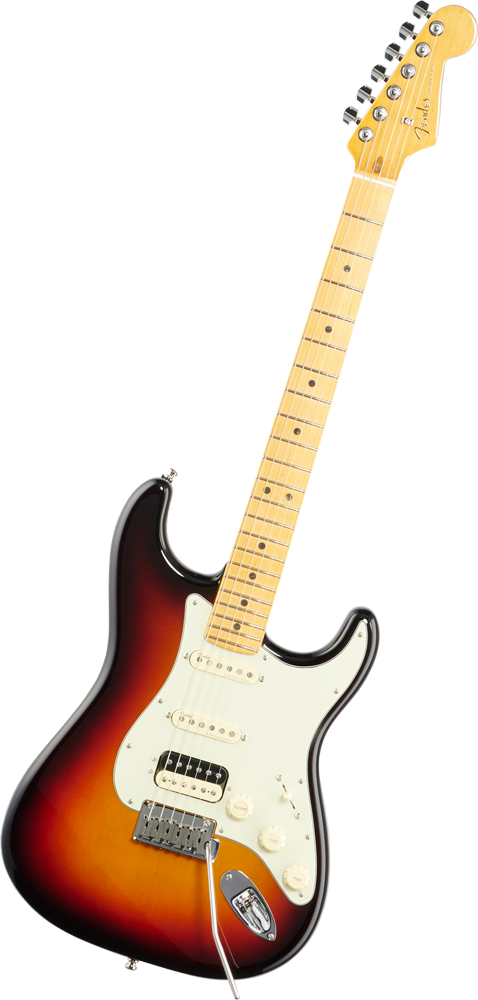Fender Stratocaster

The Fender Stratocaster, colloquially known as the Strat, is a model of electric guitar designed from 1952 into 1954 by Leo Fender, Bill Carson and George Fullerton, and completed by Freddie Tavares. The Fender Musical Instruments Corporation has continuously manufactured the Stratocaster from 1954 to the present. It is a double-cutaway guitar, with an extended top "horn" shape for balance like the Precision Bass guitar. Along with the Gibson Les Paul and Fender Telecaster, it is one of the most-often emulated electric guitar shapes. "Stratocaster" and "Strat" are trademark terms belonging to Fender. Guitars that duplicate the Stratocaster by other manufacturers are usually called S-Type or ST-type guitars.
The archetypical Stratocaster is a solid-body electric guitar with a contoured asymmetric double-cutaway body with an extended upper horn; the body is usually made from alder or ash. The neck is usually made from maple and attached to the body with screws (often referred to as "bolts") and has a distinctive headstock with six tuning pegs mounted inline along a single side; the fingerboard may be maple or another wood, e.g. rosewood, and has at least twenty-one frets. The Stratocaster's body is front-routed for electronics, which are mounted in a plastic pickguard. Most Stratocasters have three single-coil pickups, a pickup selector switch, one volume control and two tone controls. Pivoting "tremolo" bridges are common, balanced by springs mounted in a rear cavity, and the bridge has six individually adjustable saddles whose height and intonation can be set independently. The output jack is mounted in a recess in the front of the guitar body. Many different colours have been available. The Stratocaster's scale length is 25.5 inches (648 mm).
There have been minor changes to the design over the years and models with features that differ from the archetypical design. However, the essential character of the design has remained constant.